Ahmad Taher Azar
TAU: A Framework for Video-Based Traffic Analytics Leveraging Artificial Intelligence and Unmanned Aerial Systems
Mar 01, 2023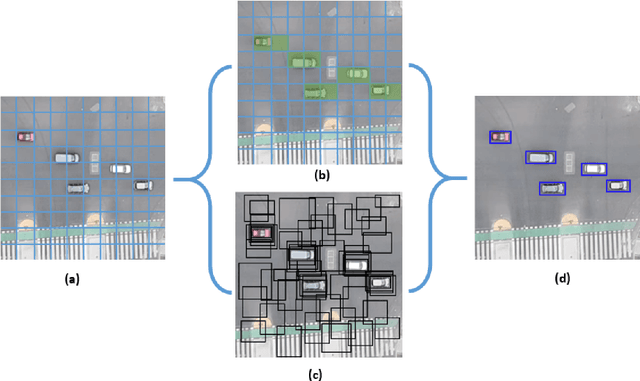
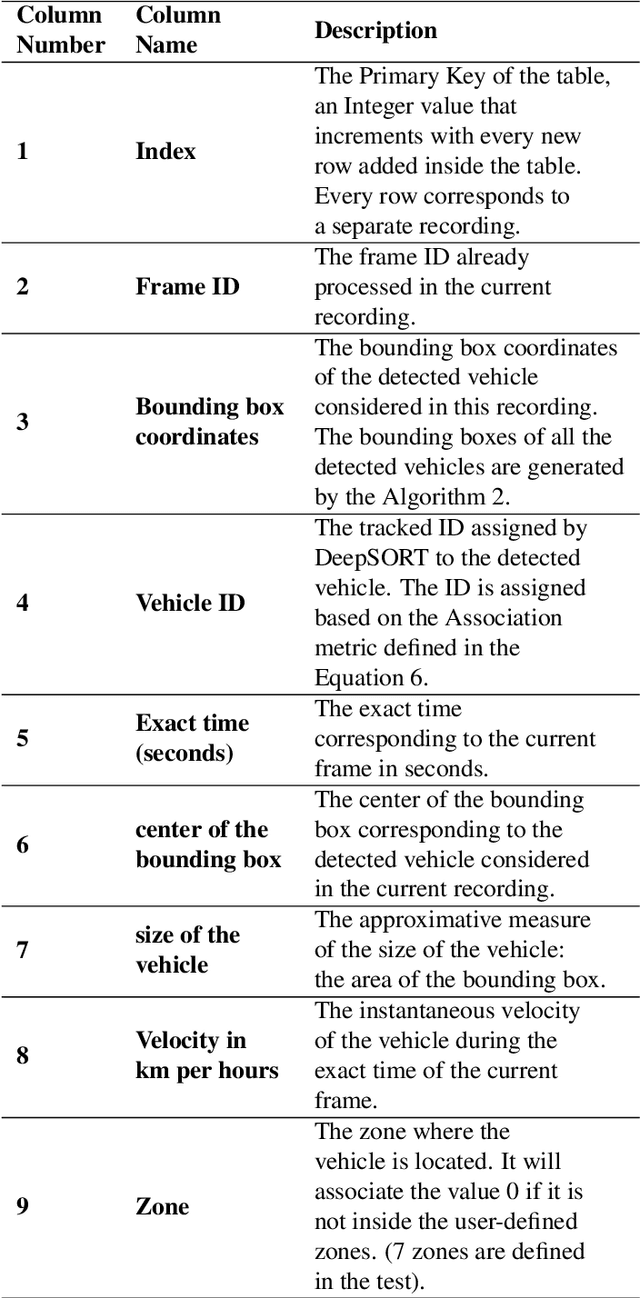
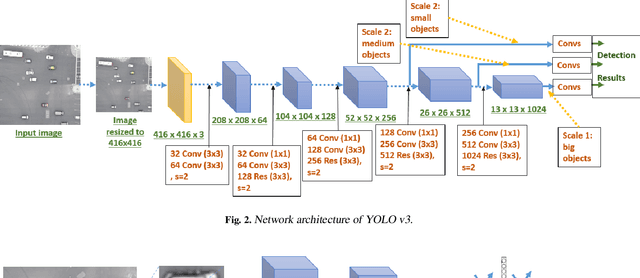
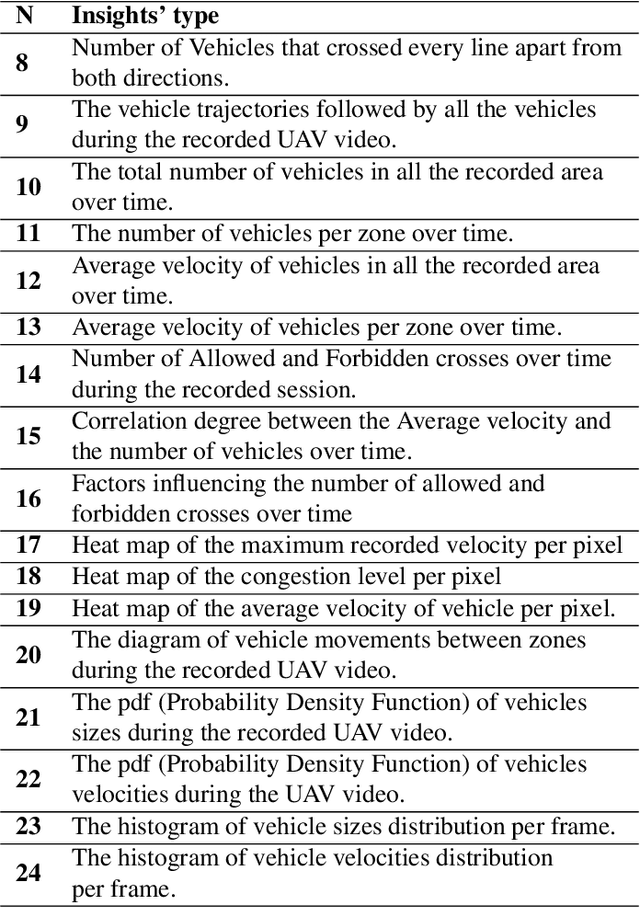
Abstract:Smart traffic engineering and intelligent transportation services are in increasing demand from governmental authorities to optimize traffic performance and thus reduce energy costs, increase the drivers' safety and comfort, ensure traffic laws enforcement, and detect traffic violations. In this paper, we address this challenge, and we leverage the use of Artificial Intelligence (AI) and Unmanned Aerial Vehicles (UAVs) to develop an AI-integrated video analytics framework, called TAU (Traffic Analysis from UAVs), for automated traffic analytics and understanding. Unlike previous works on traffic video analytics, we propose an automated object detection and tracking pipeline from video processing to advanced traffic understanding using high-resolution UAV images. TAU combines six main contributions. First, it proposes a pre-processing algorithm to adapt the high-resolution UAV image as input to the object detector without lowering the resolution. This ensures an excellent detection accuracy from high-quality features, particularly the small size of detected objects from UAV images. Second, it introduces an algorithm for recalibrating the vehicle coordinates to ensure that vehicles are uniquely identified and tracked across the multiple crops of the same frame. Third, it presents a speed calculation algorithm based on accumulating information from successive frames. Fourth, TAU counts the number of vehicles per traffic zone based on the Ray Tracing algorithm. Fifth, TAU has a fully independent algorithm for crossroad arbitration based on the data gathered from the different zones surrounding it. Sixth, TAU introduces a set of algorithms for extracting twenty-four types of insights from the raw data collected. The code is shared here: https://github.com/bilel-bj/TAU. Video demonstrations are provided here: https://youtu.be/wXJV0H7LviU and here: https://youtu.be/kGv0gmtVEbI.
* This is the final proofread version submitted to Elsevier EAAI: please see the published version at: https://doi.org/10.1016/j.engappai.2022.105095
Image Fusion Techniques in Remote Sensing
Mar 11, 2014Abstract:Remote sensing image fusion is an effective way to use a large volume of data from multisensor images. Most earth satellites such as SPOT, Landsat 7, IKONOS and QuickBird provide both panchromatic (Pan) images at a higher spatial resolution and multispectral (MS) images at a lower spatial resolution and many remote sensing applications require both high spatial and high spectral resolutions, especially for GIS based applications. An effective image fusion technique can produce such remotely sensed images. Image fusion is the combination of two or more different images to form a new image by using a certain algorithm to obtain more and better information about an object or a study area than. The image fusion is performed at three different processing levels which are pixel level, feature level and decision level according to the stage at which the fusion takes place. There are many image fusion methods that can be used to produce high resolution multispectral images from a high resolution pan image and low resolution multispectral images. This paper explores the major remote sensing data fusion techniques at pixel level and reviews the concept, principals, limitations and advantages for each technique. This paper focused on traditional techniques like intensity hue-saturation- (HIS), Brovey, principal component analysis (PCA) and Wavelet.
Ant Colony based Feature Selection Heuristics for Retinal Vessel Segmentation
Mar 07, 2014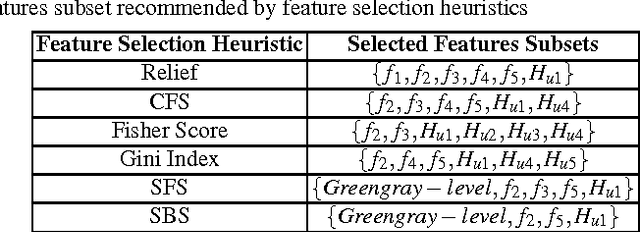

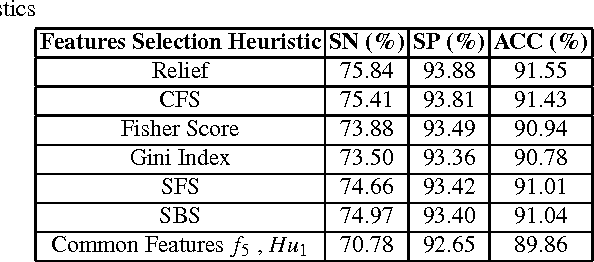
Abstract:Features selection is an essential step for successful data classification, since it reduces the data dimensionality by removing redundant features. Consequently, that minimizes the classification complexity and time in addition to maximizing its accuracy. In this article, a comparative study considering six features selection heuristics is conducted in order to select the best relevant features subset. The tested features vector consists of fourteen features that are computed for each pixel in the field of view of retinal images in the DRIVE database. The comparison is assessed in terms of sensitivity, specificity, and accuracy measurements of the recommended features subset resulted by each heuristic when applied with the ant colony system. Experimental results indicated that the features subset recommended by the relief heuristic outperformed the subsets recommended by the other experienced heuristics.
Continuous Features Discretization for Anomaly Intrusion Detectors Generation
Mar 07, 2014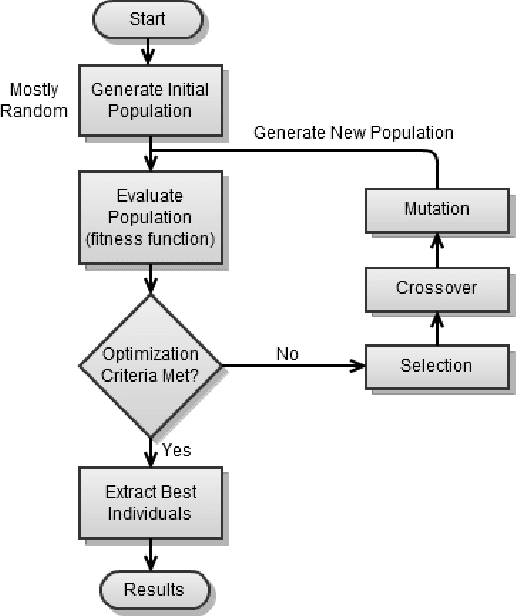
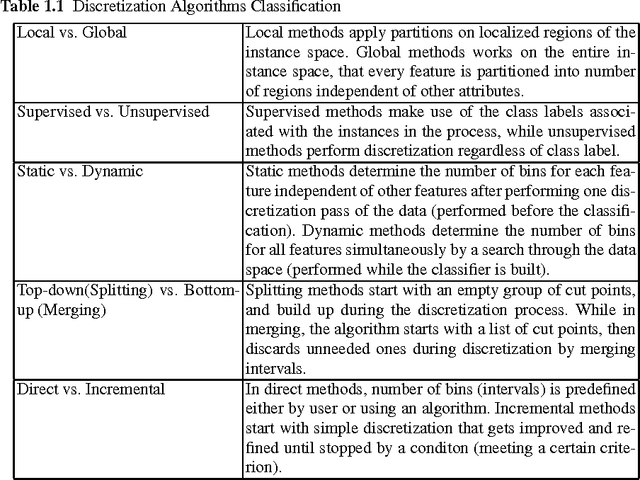
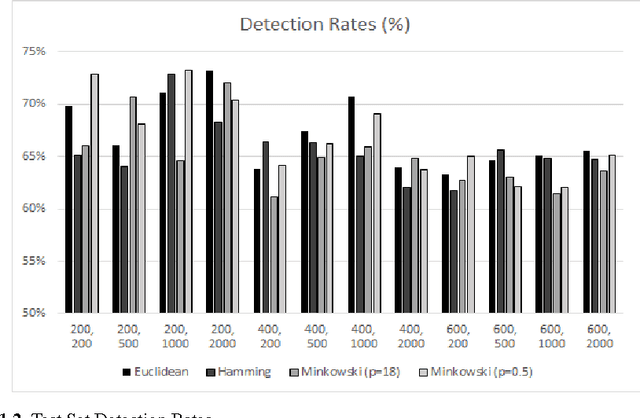
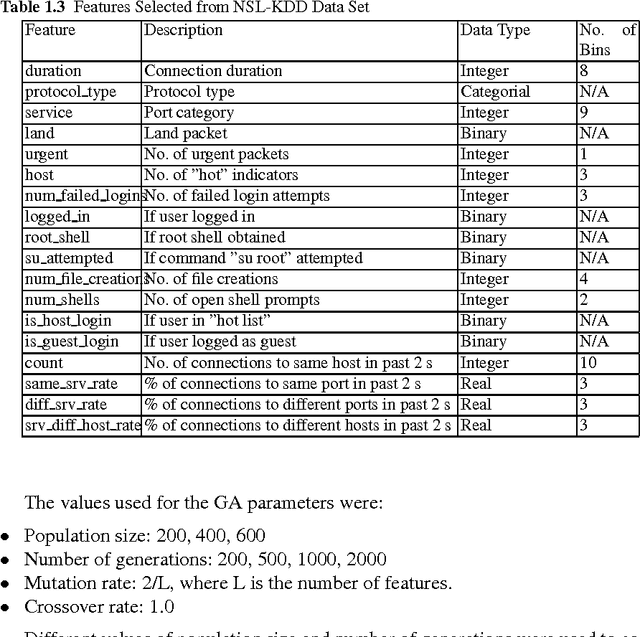
Abstract:Network security is a growing issue, with the evolution of computer systems and expansion of attacks. Biological systems have been inspiring scientists and designs for new adaptive solutions, such as genetic algorithms. In this paper, we present an approach that uses the genetic algorithm to generate anomaly net- work intrusion detectors. In this paper, an algorithm propose use a discretization method for the continuous features selected for the intrusion detection, to create some homogeneity between values, which have different data types. Then,the intrusion detection system is tested against the NSL-KDD data set using different distance methods. A comparison is held amongst the results, and it is shown by the end that this proposed approach has good results, and recommendations is given for future experiments.
Expert System Based On Neural-Fuzzy Rules for Thyroid Diseases Diagnosis
Mar 03, 2014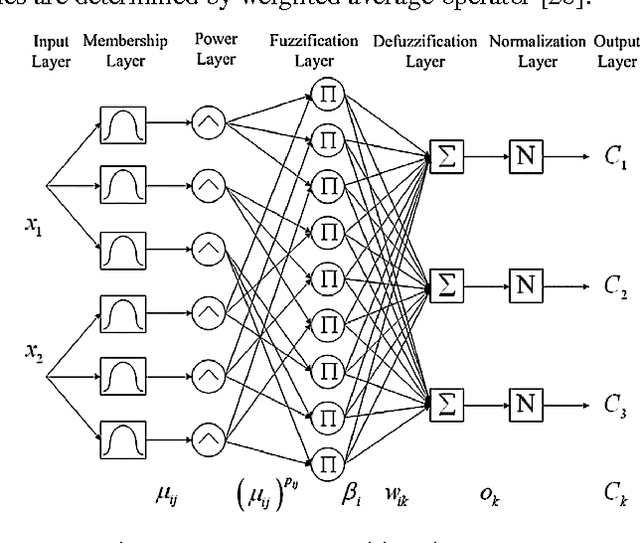

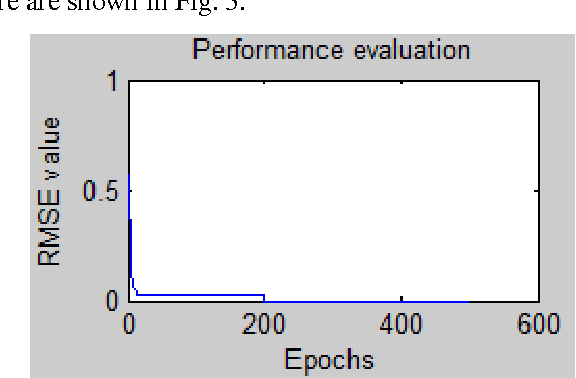

Abstract:The thyroid, an endocrine gland that secretes hormones in the blood, circulates its products to all tissues of the body, where they control vital functions in every cell. Normal levels of thyroid hormone help the brain, heart, intestines, muscles and reproductive system function normally. Thyroid hormones control the metabolism of the body. Abnormalities of thyroid function are usually related to production of too little thyroid hormone (hypothyroidism) or production of too much thyroid hormone (hyperthyroidism). Therefore, the correct diagnosis of these diseases is very important topic. In this study, Linguistic Hedges Neural-Fuzzy Classifier with Selected Features (LHNFCSF) is presented for diagnosis of thyroid diseases. The performance evaluation of this system is estimated by using classification accuracy and k-fold cross-validation. The results indicated that the classification accuracy without feature selection was 98.6047% and 97.6744% during training and testing phases, respectively with RMSE of 0.02335. After applying feature selection algorithm, LHNFCSF achieved 100% for all cluster sizes during training phase. However, in the testing phase LHNFCSF achieved 88.3721% using one cluster for each class, 90.6977% using two clusters, 91.8605% using three clusters and 97.6744% using four clusters for each class and 12 fuzzy rules. The obtained classification accuracy was very promising with regard to the other classification applications in literature for this problem.
 Add to Chrome
Add to Chrome Add to Firefox
Add to Firefox Add to Edge
Add to Edge